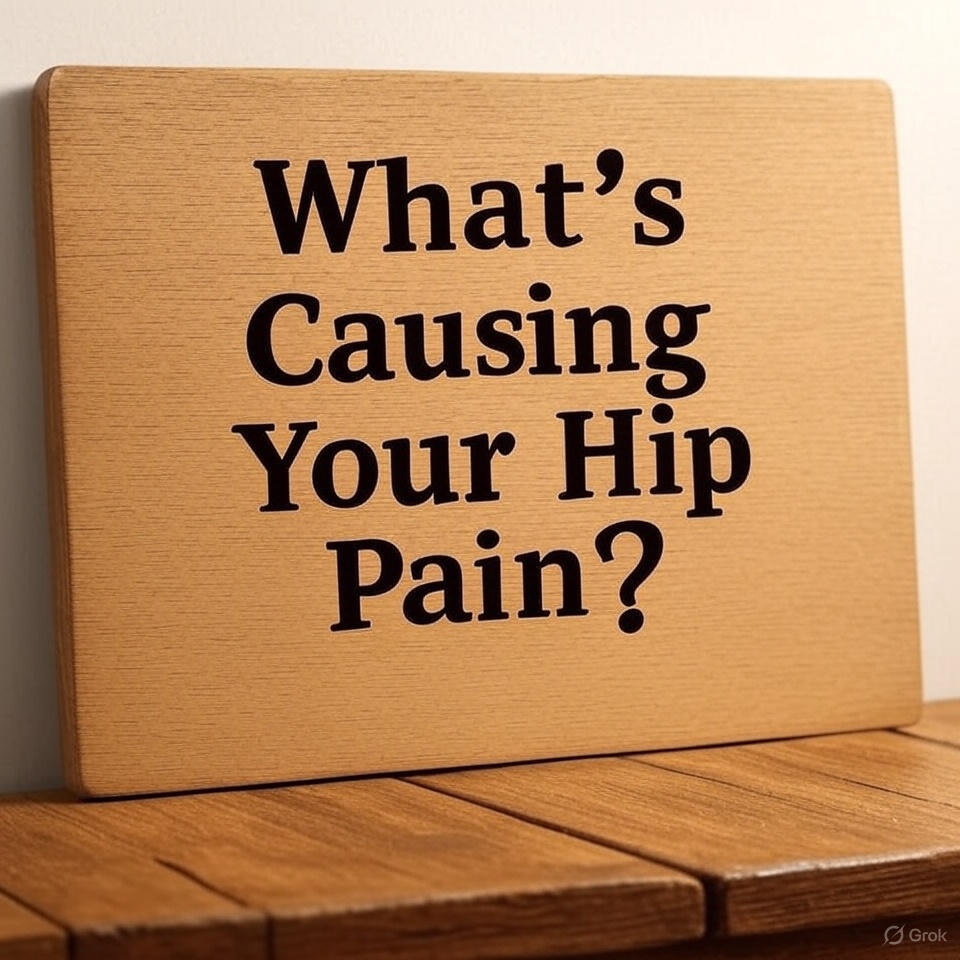If you have recently noticed discomfort in your hip after a long day at your desk or during your morning walk, you are not alone. Hip pain is an issue that often shows up when you least expect it, and can make even simple daily tasks feel challenging. But before you reach for a pain reliever or choose to ignore it, it is essential to understand what may be going on inside your hip. Remember: Hip pain is a signal that can point to several different causes, each with its own unique solution. So with that in mind, let’s explore and identify what may be happening in your hip joint and how you can best take control of the situation.
What exactly is hip pain?
The rule of thumb is simple: Hip pain can manifest itself in different ways throughout your hip region. At present, you could be feeling a deep ache in your groin, a stabbing sensation on the side of your hip, or some referred pain down your leg. Such issues are all valuable clues in identifying the nature of your hip pain. For instance, hip pain that occurs in the groin area is typically related to the ball-and-socket joint that sits deep within our pelvis. Similarly, what many people call “hip pain” can actually originate from the muscles, tendons, nerves, or other structures around the joint as well.
What are the main causes of hip pain?
To find the true cause of your hip pain, let’s break the most common causes down into categories and explore their natures one by one.
Joint Problems:
Osteoarthritis: According to the NHS, osteoarthritis (OA) is the most common cause of hip pain, especially as we grow older. This condition occurs when the cartilage protecting our hip joint withers away, leading to direct contact between the bones. That said, what makes osteoarthritis particularly challenging is its progressive nature. The pain that follows this condition develops slowly and worsens with time. But, with proper management, you can significantly slow its progression and still maintain your quality of life.
Rheumatoid arthritis: Unlike OA, rheumatoid arthritis (RA) is an autoimmune condition in which your body’s immune system attacks the lining of your joints. This inflammation that follows affects multiple joints simultaneously, including your hips. One defining characteristic of RA is how the pain and stiffness may be worse in the morning but improve as the day goes on. That being said, if you’re suffering from pain in an isolated region of the hips, it is highly unlikely that RA is the true culprit here.
Labral tears: The labrum is a ring of cartilage that stabilises your hip joint. When this structure tears, it can cause sharp pain during movement. More importantly, you might feel like your hip is locking itself in a way, or there is a clicking sensation during movement. Though labral tears are more common in athletes, they can also result from repetitive motion or structural abnormalities in your hip joint.
Hip dislocation and instability: While dislocations and instability are not as common as all the other causes, it is still worth discussing how they manifest. A hip dislocation, for one, often results in severe, immediate pain that requires emergency treatment. An instability, on the other hand, creates a feeling that your hip might give out during specific movements.
Soft Tissue Problems:
Strains and sprains: A strain occurs when muscle fibres or tendons are stretched beyond their normal range, while a sprain is related to the ligaments that connect your bones. If either of the two is the cause of your hip pain, you’ll feel pain during specific movements, and the area might be slightly tender to touch. Strains and sprains are not a major cause for concern, as most of them heal well with rest and proper care.
Tendonitis: Tendonitis involves inflammation of the tendons and develops from repetitive activities or a sudden increase in physical activity. The pain usually starts slowly on the side of the hips and may worsen with continued activity. Similar to sprains, this condition is also easily treatable with rest and targeted exercise.
Other Causes:
Bone diseases: Conditions like osteonecrosis, where bone tissue dies due to lack of blood supply, or bone tumours can also cause hip pain. These are less common but require prompt medical attention. The pain from bone diseases is often constant and may worsen at night, which can help distinguish it from other causes.
Sciatica: Sometimes, what may feel like hip pain can have its origins in your lower back. Sciatica occurs when the sciatic nerve in our body becomes compressed or irritated, sending pain signals down through your buttock and into the leg. This pain often has a burning or tingling quality and may be accompanied by numbness that goes all the way down to your feet. Usually, sciatica pain subsides within 2 months with rest and targeted exercise.
What can you do at home to manage hip pain?
Before seeking professional treatment, there are several strategies you can try at home to alleviate your hip pain. For starters, applying ice to the affected area for 15-20 minutes several times a day can reduce inflammation and numb the pain, particularly in the first 48 hours in case of an injury. Then, after this initial period, heat therapy can help relax tight muscles and improve blood flow to the area.
Gentle stretching and low-impact exercises can also be tremendously helpful in joint and soft tissue problems. For instance, simple movements or specific hip-related stretches can help you maintain flexibility and strengthen all the supporting muscles around your joint. Though remember: finding the right balance is key here. Always listen to your body and avoid any movements that significantly increase your pain.
Lastly, if you wish to seek temporary relief, over-the-counter pain medications like ibuprofen or paracetamol will be your best bet in staying mobile. Make sure to follow the recommended dosages and consult with a GP familiar with your medical history if you have any underlying health conditions or take other medications.
When should you seek professional help?
While some hip pain resolves on its own with rest and home care, certain situations can warrant immediate medical attention. If your pain follows an injury, for instance, seek care as soon as possible. Similarly, if you experience numbness, tingling, or weakness in your leg alongside hip pain, these could be signs of some nerve-related issue that will undoubtedly require professional evaluation.
Generally speaking, you should also consider consulting a healthcare provider if your hip pain persists for more than a few days and begins to interfere with your daily life. Knowing where your pain stems from and how it feels can help you and your healthcare provider pinpoint the underlying issue more effectively. A good hip doctor in London will always perform the necessary examinations and imaging scans to determine the exact cause of your pain and develop a personalised treatment plan to help you manage it.
Do not fear your hip pain
Hip pain is a problem that you can easily manage and overcome, and it is not something to fear at all. Whether through conservative management, targeted exercises, or more advanced interventions when necessary, there is always a solution to this issue. The only thing you need to remember is that every person’s experience with hip pain is unique. What works for one individual might not be the best approach for another. So take that first step: Try some gentle exercises, schedule an appointment with a healthcare provider, or explore your condition as much as you can. Your hip pain may feel overwhelming for now, but with the proper knowledge and support, you can regain control and get back to the activities you love.




